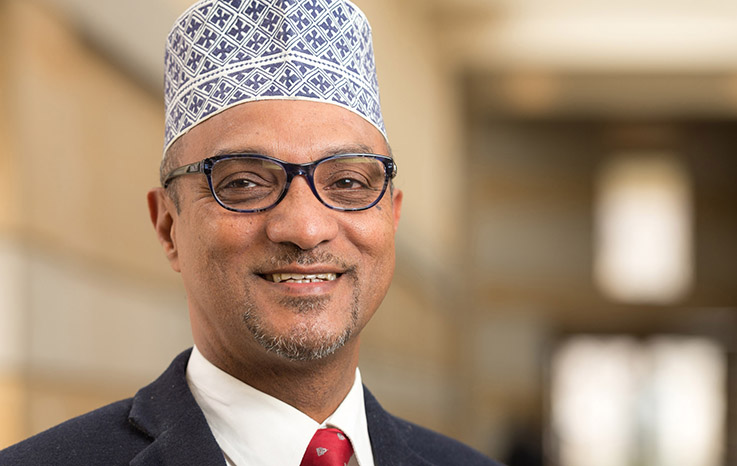
I would like to share nine (9) brief points. The first three are conceptual and addresses what we mean by social cohesion. The second three points relate to my broad diagnosis of the root causes of deadly conflict and violence, which is the anti-thesis of social harmony. Lastly, I conclude by sharing three modest suggestions as to how we can contribute to building a culture of social cohesion.
It might be useful and expedient to begin by briefly exploring the definition of social cohesiveness. A cohesive society is one that strives for and works towards the well-being and flourishing of all its members. It fights exclusion and marginalization, creates a sense of belonging, promotes trust among diverse groups, and offers all of its members the opportunity to develop towards their full human potential and upward mobility.
The second conceptual point is that conflict is not in and of itself negative or an aberration of the human condition. Conflict, as the Mennonite peacebuilder John Paul Lederach argues, can be a motor for social change.
The third conceptual point is based on the legacy and heritage of Nelson Mandela who lived and acted out the values and principles he preached in his life. He asserted that:
“No one is born hating another person because of the color of his skin or his background or his religion. People must learn to hate, and if they can learn to hate, they can be taught to love, for love comes more naturally to the human heart than its opposite.” (Long Walk to Freedom)
Root Causes of Breakdown in Social Cohesion
There are a number of complex variables that contribute to the breakdown of social cohesiveness. Some of these factors have to do with social structures i.e. the way a society interacts and lives together, its political economy, and its legal system. Other factors are structural and have to do with the legacy of historical injustices, cultural systems and socialization.
Often structural factors are overlooked. For example, the oppressive apartheid system into which I was born and raised has deeply polluted the way in which I view people with darker skin pigmentation. The apartheid system divided the South African population into four groups: Whites, Indians, Coloured and Blacks. Under the apartheid system I was classified as a coloured, meaning a person of mixed ancestry. Therefore my parents were legally compelled to live in a segregated area designated for people of colour and I was legally compelled to attend a school that was appropriated to “coloureds” only. Having been socialized in such a system, and being legally prevented from interacting with people of different cultures and skin colours has distressingly affected my worldview. I am, therefore, acutely sensitive to the way in which the apartheid system and structures has conditioned and socialized me and I am mindful of the need to heal myself from the scourge of racism.
Three Modest Suggestions for Building Social Cohesion
I would like to conclude with three modest suggestions for how we can contribute to building social cohesion.
First, we need to start early by immunizing our children against racism. Our educational content and pedagogy should be deliberated anti-racism education.
Second, we must provide our children with the critical tools they need to closely interrogate the structures of our societies and to identify the factors that breed attitudes of superiority and undermine social cohesion. For example, in contemporary societies the huge inequalities in wealth bread classism and a breakdown of social cohesion.
Third, we need to model anti-racism and provide children with concrete examples of anti-racism struggles. In this regard we should guard against exaggerating and mythologizing our heroes. For example, in South Africa there is a robust debate about how deliberate Mohandas K. Gandhi was in linking his struggle for the rights of Indians to that of black Africans (The South African Gandhi, Ashwin Desai and Goolam Vahed, 2016). By viewing our heroes as human beings and not as angels, we can not only embrace their overwhelming goodness but also learn from their mistakes and add value to their legacies. The same approach of embracing the frailties of our heroes should undergird our all other heroes such as, Rosa Parks, Dorothy Day, Martin Luther King Jr. and Nelson Mandela. Mandela was a man who embodied some extraordinary human qualities and some frailties. His most remarkable achievement was that of reconciliation but this also came at a great cost to South Africa. It is lamentable therefore, that twenty-three years after the end of Apartheid, and the onset democratic rule in which all South Africans enjoy equal rights as citizens, there is still unforgivable levels of social and economic inequalities in this country.
In conclusion, I’ve shared these broad and general ideas in the hope that it may provoke a deeper discussion about our topic. They are not comprehensive and certainly should not be cast in stone.
Many thanks for your patience with me.